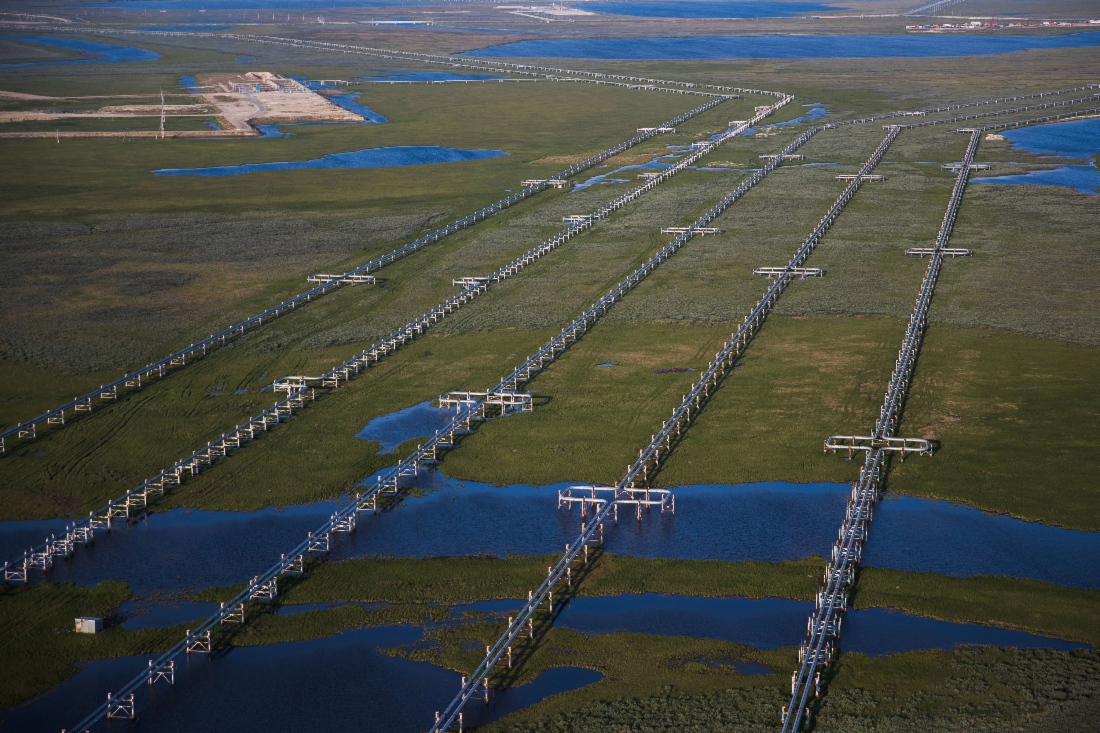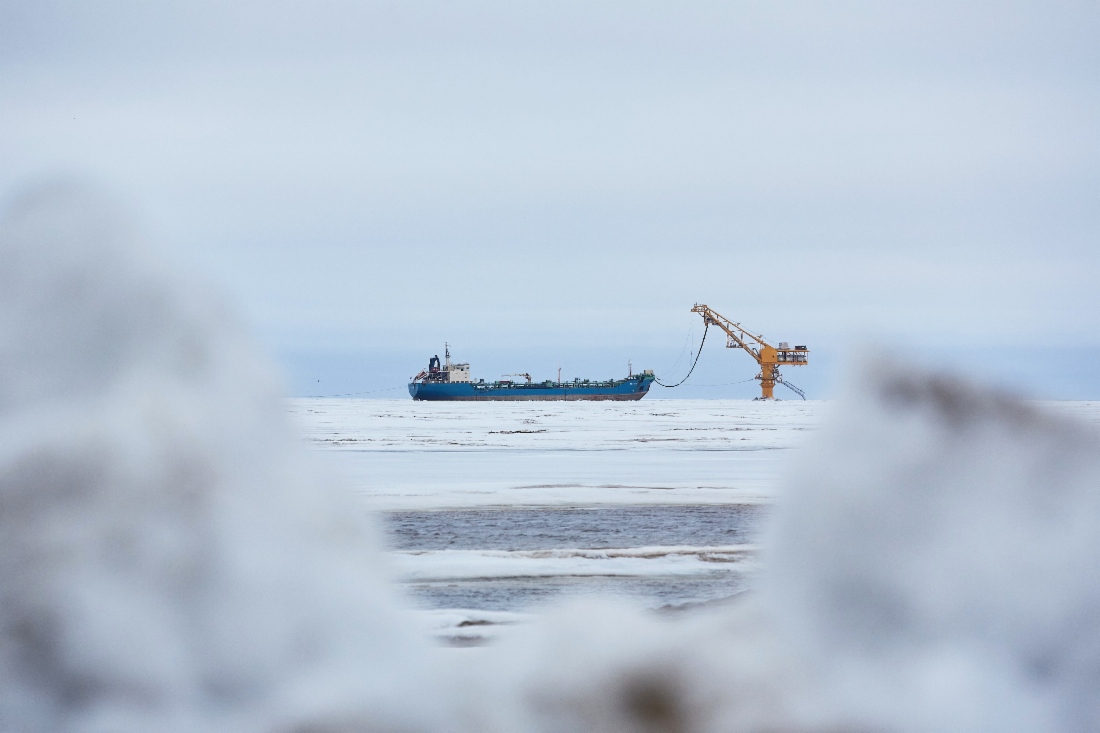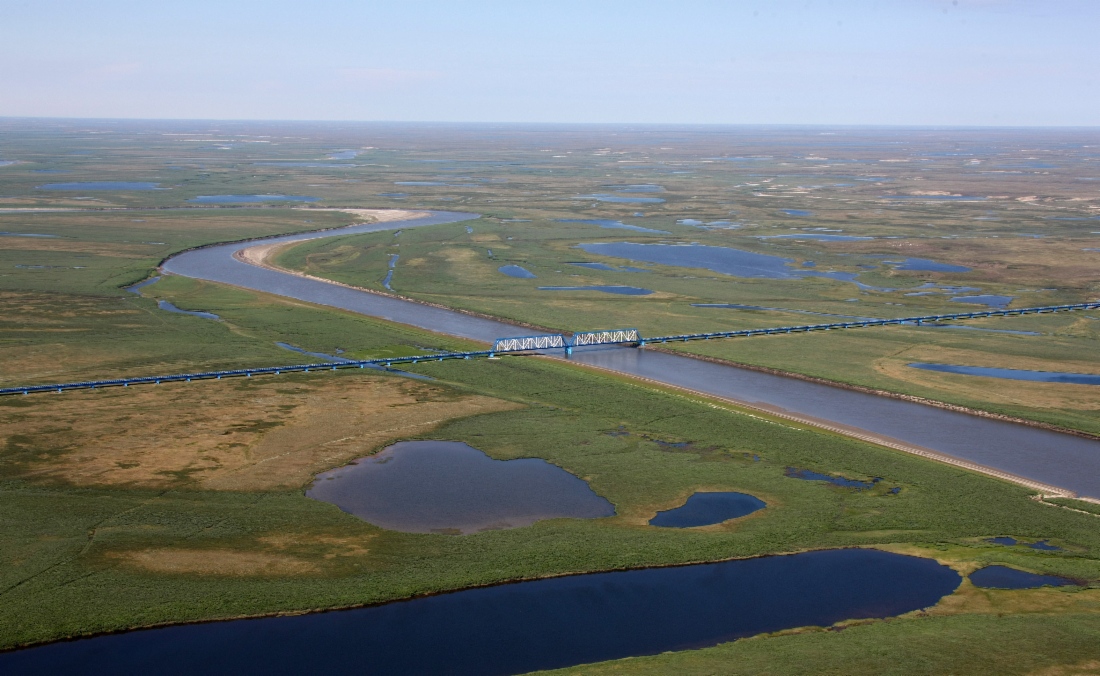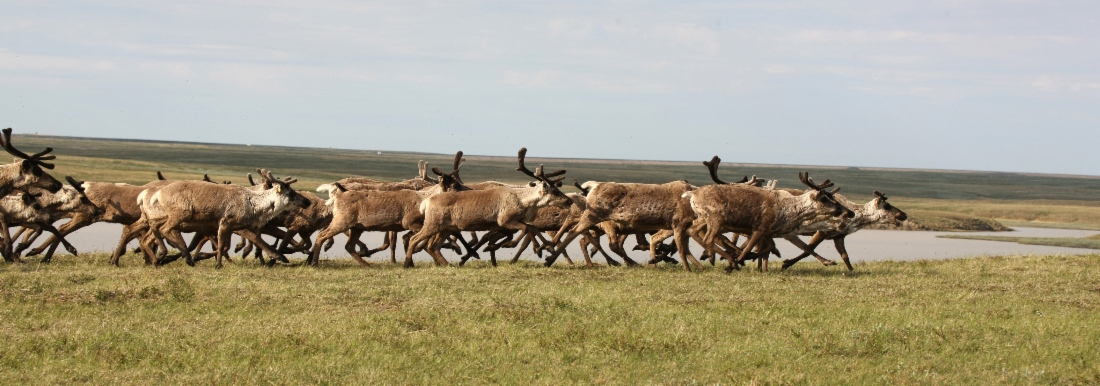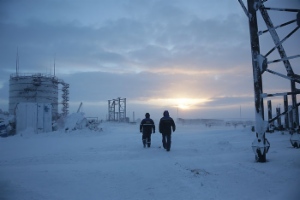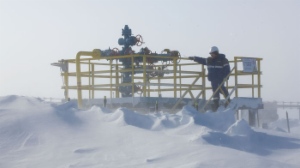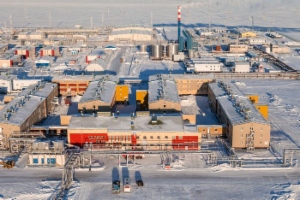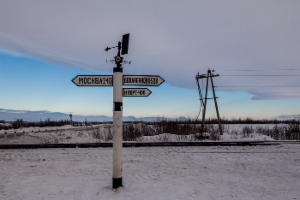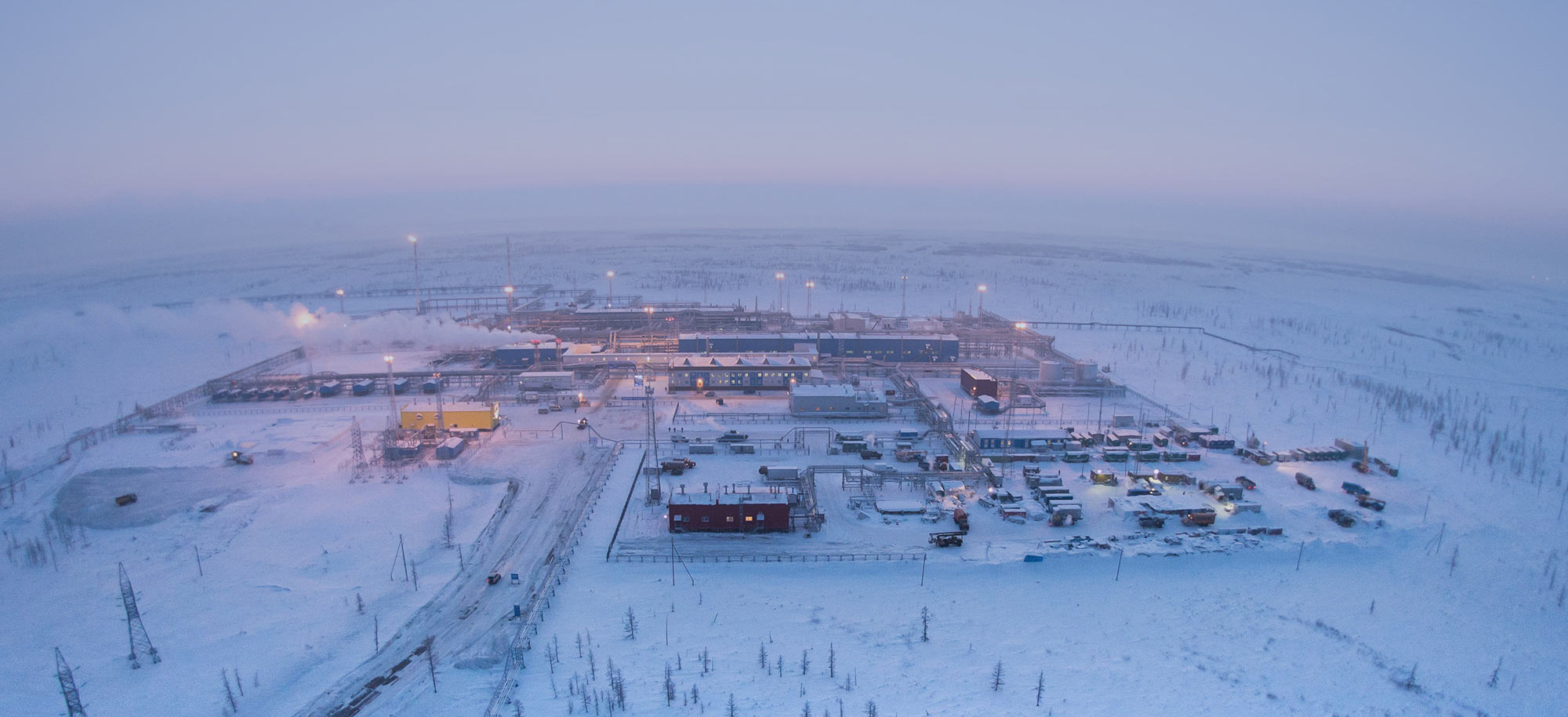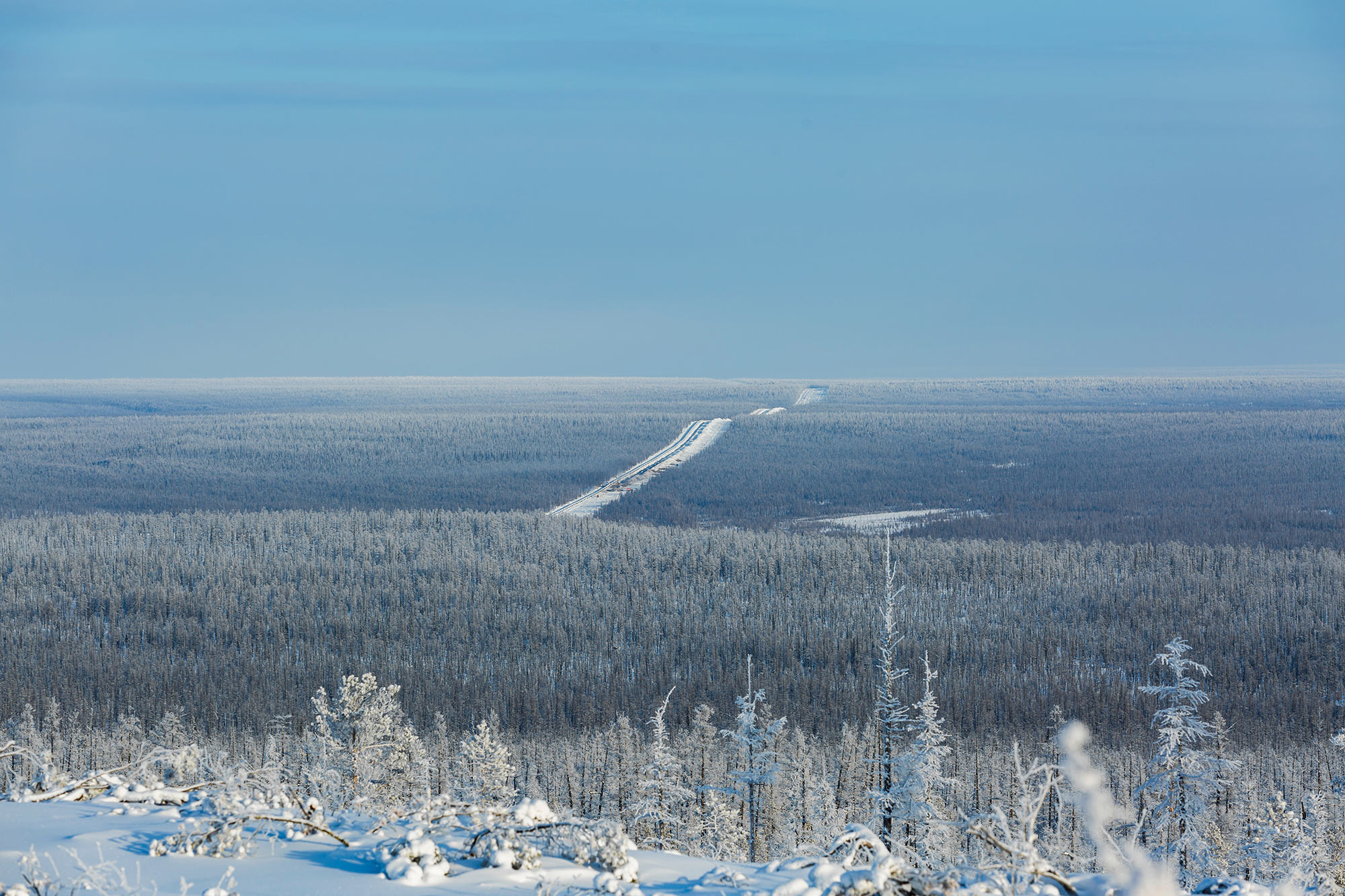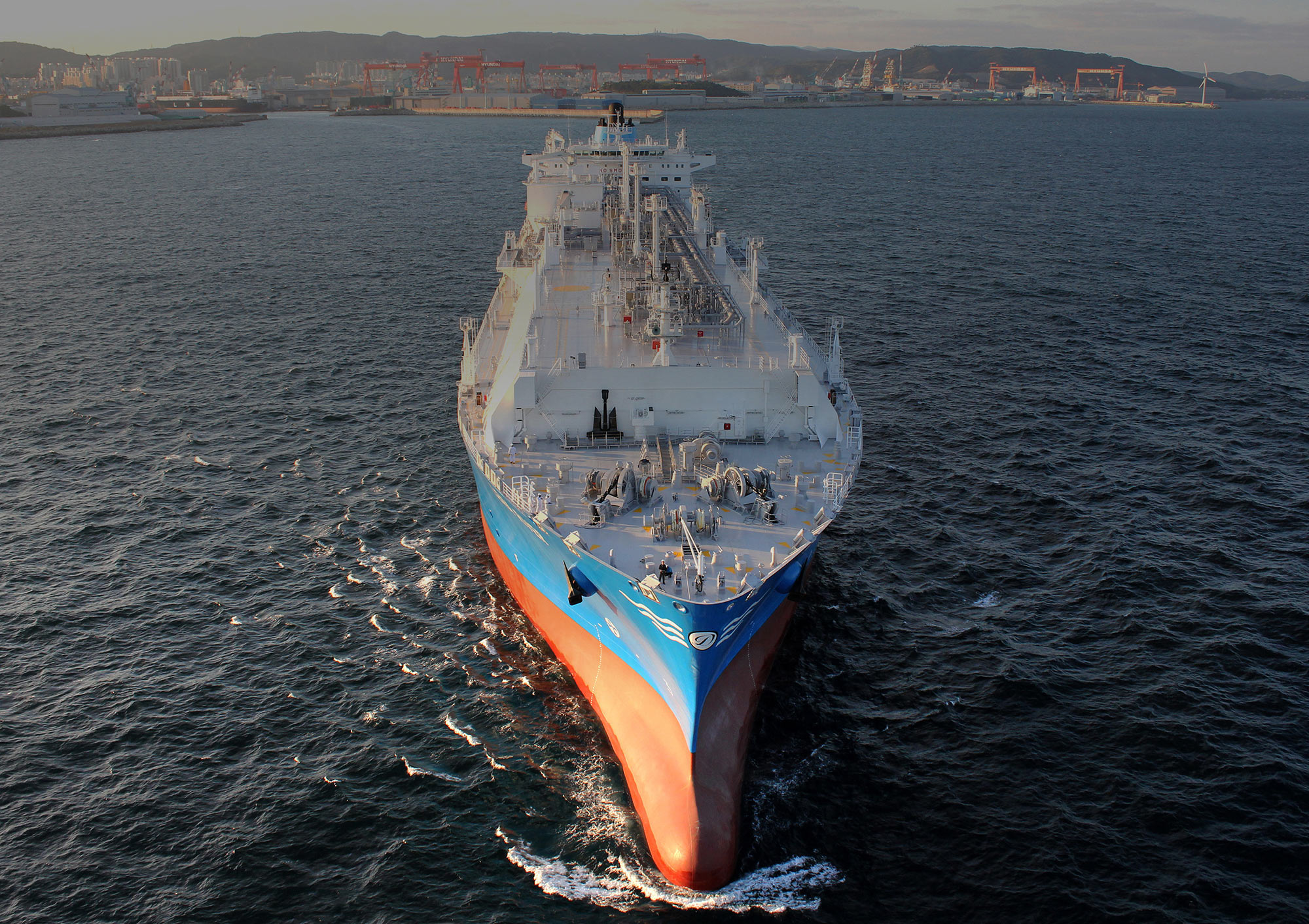The new gas production center in the Yamal Peninsula is key to the development of the Russian gas industry in the 21st century. Gazprom intends to carry out production operations in Yamal for over 100 years.
Number of the Gazprom Group’s fields: 18.
Total reserves and resources of all of the Gazprom Group’s fields in the Yamal Peninsula and the Yamal shelf of the Kara Sea: 20.4 trillion cubic meters of gas and 1 billion tons of gas condensate and oil.
The Yamal gas production center includes the Bovanenkovskoye and Kharasaveyskoye fields, which are unique in terms of reserves and will provide consumers with gas for more than 100 years.
Production in Yamal:
2021: 100 billion cubic meters of gas.
Project scope
Bovanenkovo group
This group has the largest extraction potential and includes three key fields – Bovanenkovskoye, Kharasaveyskoye, and Kruzenshternskoye – as well as satellite fields, namely Vostochno-Bovanenkovskoye, Severo-Bovanenkovskoye, and Yuzhno- Kruzenshternskoye.
Tambey group
This group includes the Tambeyskoye and Malyginskoye fields, which are comparable to the fields of the Bovanenkovo group in terms of their gas reserves.
Southern group
This group consists of the Novoportovskoye, Kamennomysskoye, Malo-Yamalskoye, Blizhnenovoportovskoye and Khambateyskoye fields. This zone is considered to be a priority asset for producing liquid hydrocarbons.
Off-Yamal group
Five fields: Leningradskoye and Rusanovskoye, as well as three fields discovered by Gazprom, such as Nyarmeyskoye, Dinkov, and 75 Years of Victory.
Hydrocarbon transportation system
A next-generation gas transmission corridor linking the Bovanenkovskoye field to Ukhta is in place to supply gas from the Yamal Peninsula to Russia’s Unified Gas Supply System. Year-round oil shipments are made from the Arctic Gate oil loading terminal.
Infrastructure
A comprehensive support system is in operation for industrial and residential purposes. The system includes motor roads, power plants, a shift camp, industrial facilities, the 572-kilometer Obskaya – Bovanenkovo – Karskaya railroad, and an airport.
Project implementation
The largest field in Yamal in terms of explored gas reserves is Bovanenkovskoye. The Cenomanian-Aptian deposits of Bovanenkovskoye rank as a top-priority development target. In 2012, the field’s first gas production facility (GP-2) was brought onstream. The second (GP-1) and third (GP-3) gas production facilities were put into operation in 2014 and 2018, respectively. The three facilities have an aggregate design capacity of 115 billion cubic meters of gas per year.
The Bovanenkovo – Ukhta gas trunkline became operational in 2012 and the Bovanenkovo – Ukhta 2 gas pipeline came onstream in early 2017.
In 2016, the Novoportovskoye oil field and the Arctic Gate offshore oil loading terminal entered commercial operation.
In 2019, Gazprom commenced the full-scale pre-development of the Kharasaveyskoye field, which is expected to start producing gas in 2023.
In 2021, an agreement was signed with a partner company on the implementation of a joint project for the development of the Tambeyskoye field, with gas production slated to start in 2026.
Advanced technologies
Overcoming the Yamal Peninsula’s harsh climate and environment, Gazprom has made Yamal its launch pad for efficient, safe and innovative technologies and technical solutions.
The Yamal megaproject is unparalleled in terms of complexity, as its hydrocarbon reserves are concentrated in a hard-to-reach area with exceedingly difficult climatic conditions. The region is characterized by permafrost, long winters, and low mean temperatures (up to minus 50 degrees Celsius). In summer, 80 per cent of Yamal’s territory is covered by lakes, swamps and rivers, which considerably limits the possibilities for industrial construction. Gazprom has been employing efficient, safe and innovative technologies and technical solutions in Yamal. Many of those innovations were developed at the Company’s request by leading Russian research institutions and companies.
Production technologies
For the first time in Russia, a single infrastructure is used to produce gas from the Cenomanian (at a depth of 520–700 meters) and Aptian-Albian (1,200–2,000 meters) deposits of the Bovanenkovskoye field. This approach helps save significant amounts of money on pre-development, accelerate construction processes, and improve field development efficiency.
Field development started with the lower gas deposits, which have a higher formation pressure. As the pressure levels out, the upper deposits are brought into development. Lower-pressure Cenomanian deposits are developed last in order to compensate for the natural decrease in gas production from the Aptian deposits. Accordingly, separate groups of production wells are drilled for individual deposits and connected to a unified gas collecting network on a step-by-step basis.
Due to difficult terrain conditions, the regulatory framework for well design had to be updated. The new regulations allowed the Company to shorten the distance between wellheads in clusters from 40 meters to 15–20 meters and to reduce to a minimum the acreage of and pre-development operations for well clusters, access roads and other communications while ensuring industrial safety.
Work processes at Bovanenkovskoye are highly automated thanks to the use of lightly manned technologies. For the first time in Gazprom’s history, automated well hookup modules (MOS-2) are being used in field development. The modules are employed to control and manage Christmas trees and ensure reliable well operation in case of hydrate formation.
To prepare gas for transmission, the Company uses the most cutting-edge and eco-friendly method of low-temperature separation with domestically-produced turbo expanders.
Transportation technologies
Gas from Yamal is injected into Russia’s Unified Gas Supply System via next-generation gas pipelines operating at a pressure of 11.8 MPa (120 atm). Gazprom managed to achieve the record-high pressure in its offshore pipelines primarily by using custom-made pipes. The 1,420-millimeter pipes with internal flow coating were made by Russian manufacturers from grade K65 (X80) steel.
The submerged crossing under Baidarata Bay proved to be the biggest challenge in the construction of the gas transmission system. Baidarata Bay is marked by unique environmental conditions: despite its shallow depth, it has frequent spells of stormy weather, with complex bottom sediments and frost penetration to the bottom in winter. For that section, the Company used 1,219-millimeter concrete-coated pipes designed for the working pressure of 11.8 MPa. As a result, Gazprom set a precedent for the national and global gas industries by laying pipes with such specifications in such a difficult environment.
The Arctic Gate offshore oil loading terminal, which is located in Ob Bay, is also unique. It is designed to operate under extreme conditions, as temperatures in the region can drop below minus 50 degrees Celsius and ice can grow over two meters thick. The terminal has a two-tier protection system and complies with the most stringent requirements for industrial safety and environmental protection. The terminal’s equipment is fully automated and safely protected from hydraulic shocks. A special system allows for prompt undocking without depressurizing the units undergoing disconnection. The zero discharge technology prevents foreign substances from getting into Ob Bay, which is of paramount importance to the preservation of the Arctic environment. Moreover, the subsea pipeline that connects the terminal to the coastal tank battery is protected with an additional concrete shell.
Infrastructure construction technologies
The 572-kilometer Obskaya – Bovanenkovo – Karskaya railroad built by Gazprom ensures reliable all-weather communication between the Yamal Peninsula and continental Russia, as well as year-round cargo and passenger transportation. It is the only railroad in the world that can operate in such a harsh climate.
With a view to preserve the load-bearing capacity of permafrost, all construction operations for the core facilities were conducted in subzero temperatures. The railroad embankment was made from damp silty sand, which solidifies under low temperatures. A unique multi-layered heat insulation system was developed and employed to ensure roadbed stability in summer: expanded polysterene was laid over frozen sand and geotextile reinforcements were made.
The bridge over the Yuribey River floodplain posed the most difficulty to railroad builders. It has no precedent in bridge-building practices in terms of design and the climatic and geocryological conditions of construction and operation. At 3.9 kilometers in length, it is the world’s longest bridge beyond the Arctic Circle.
The builders managed to set up the bridge on a surface that is practically unfit for construction, as it consists of permafrost interspersed with cryopegs (saline water lenses in permafrost bodies that do not freeze even at minus 10 to 30 degrees Celsius). The bridge’s beams and truss were installed on 1.2–2.4-meter-wide metal pipes filled with reinforced concrete. The bridge supports go down in permafrost to a depth of 20 to 40 meters. Thanks to modern technologies and a special freezing method (thermal stabilization), the supports are virtually frozen into the ice (permafrost), further reinforcing the structure.
Environmental activities
When constructing various facilities, Gazprom is primarily concerned with preserving Yamal’s unique natural environment. The Company reduces the acreage of its facilities to a minimum. The use of vapor-liquid heat stabilizers and heat-insulated pipes in wells helps considerably alleviate impacts on the permafrost. In-plant recycling systems are used to prevent pollution of water reservoirs and soil. The environmental situation is continuously monitored.
During gas well construction, drilling waste is processed via solidification, with the resulting materials used in construction. The technology is based on a cuttings capsulation method employed at specialized mixing units. The capsulated construction materials are used in pre-development activities at the Bovanenkovskoye field, namely to create earthworks for cluster pads and to set up and maintain embankments for road slopes.
As Yamal fields are located in the indigenous territories of nomadic reindeer herders, Gazprom takes the interests of tundra dwellers into account. The Company makes a point of arranging and holding events that facilitate social and economic development in the region and help preserve the traditions and culture of indigenous minorities of the North. To that end, Gazprom identified the camp sites of reindeer herding brigades and the reindeer migration routes and built special crossings for reindeer, so that they could pass through the communications.
The Company is also running a program to boost the population of commercial northern fish.
“No other country in the world has ever created anything like this in the Arctic. This project has no precedent in the history of the global gas industry. By creating a brand new gas production center beyond the Arctic Circle, Russia has proven its leadership in the Arctic,” said Alexey Miller.







